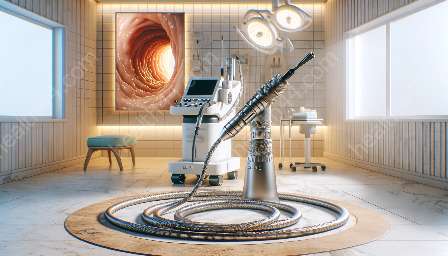Endoscopic clips play a crucial role in endoscopes and medical devices & equipment, as they are essential in various medical procedures. In this comprehensive topic cluster, we will explore the significance of endoscopic clips, their compatibility with endoscopes, and their role in the field of medical devices and equipment.
What Are Endoscopic Clips?
Endoscopic clips are small, sterile, implantable devices used to close tissue or organs during endoscopic procedures. They are usually made of biocompatible materials such as titanium, and come in various sizes and designs to accommodate different clinical needs. Endoscopic clips are often used in gastrointestinal endoscopy, laparoscopy, and other minimally invasive procedures.
Compatibility with Endoscopes
Endoscopic clips are designed to be used with endoscopes, which are medical devices used to visualize the interior of a hollow organ or cavity of the body. Endoscopes are equipped with a camera and light source, allowing medical professionals to perform diagnostic and therapeutic procedures with precision. Endoscopic clips are introduced through the working channel of the endoscope and are deployed at the targeted site to address bleeding, close wounds, or secure tissue.
Role in Medical Devices & Equipment
Endoscopic clips are an integral part of medical devices and equipment used in various specialties, including gastroenterology, surgery, and interventional endoscopy. These clips enable clinicians to perform minimally invasive procedures with enhanced precision, reducing the need for open surgeries and promoting faster recovery for patients. As a result, endoscopic clips contribute to the advancement of medical devices and equipment by improving patient outcomes and healthcare delivery.
Applications of Endoscopic Clips
Endoscopic clips have diverse applications across medical disciplines. In gastroenterology, they are used for hemostasis in cases of gastrointestinal bleeding, closure of perforations, and closure of access sites in endoscopic submucosal dissection (ESD) and endoscopic mucosal resection (EMR) procedures. In surgery, endoscopic clips are employed for hemostasis, tissue approximation, and closure of biliary or pancreatic ducts during cholecystectomies and pancreatic surgeries. The versatility of endoscopic clips makes them invaluable tools in various endoscopic procedures.
Innovation and Advancements
The field of endoscopic clips continues to witness innovation and advancements in design and technology. Newer clips are being developed with enhanced deployment mechanisms, better tissue grasping capabilities, and improved visualization features to ensure precise and effective application. Additionally, research is ongoing to explore the potential of biodegradable endoscopic clips that can dissolve in the body over time, eliminating the need for clip removal procedures.
Challenges and Considerations
While endoscopic clips offer numerous benefits, there are certain challenges and considerations associated with their use. Ensuring proper deployment and accurate positioning of the clips requires specialized skills and training. Moreover, compatibility issues with different endoscope models and variations in tissue characteristics may impact the effectiveness of endoscopic clips. Addressing these challenges involves ongoing education and training for healthcare professionals, as well as close collaboration between endoscope and medical equipment manufacturers.
Future Perspectives
The future of endoscopic clips is promising, with ongoing efforts to fine-tune their design, optimize their clinical outcomes, and expand their applications. As medical technology continues to advance, endoscopic clips are expected to play an increasingly vital role in minimally invasive procedures, contributing to improved patient care and outcomes across diverse medical specialties.
Conclusion
Endoscopic clips are integral components of endoscopes and medical devices & equipment, enabling clinicians to perform a wide range of minimally invasive procedures with precision and efficacy. Their compatibility with endoscopes, diverse applications, and potential for innovation underscore their significance in modern healthcare. As the field of endoscopic clips continues to evolve, their impact on medical devices & equipment is poised for further growth, benefitting healthcare professionals and patients alike.


